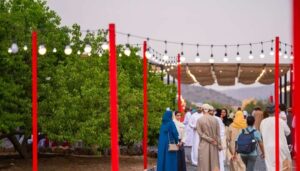State Visit of Sultan Haitham to the Netherlands Marks a New Era in Centuries-Old Omani-Dutch Ties

Muscat / The Hague, The Gulf Observer: The state visit of His Majesty Sultan Haitham bin Tarik to the Kingdom of the Netherlands has highlighted the deep-rooted and dynamic bilateral relations between the Sultanate of Oman and the Netherlands, built on nearly four centuries of diplomatic, economic, and cultural exchange.
This visit, underscoring mutual respect and a shared vision for sustainable development, aims to elevate cooperation across trade, investment, technology, education, and renewable energy sectors, reaffirming the two countries’ strategic partnership in a rapidly evolving global landscape.
A Longstanding and Evolving Partnership
The official relationship between Oman and the Netherlands dates back to 1670, when the Dutch established a consular presence in Muscat during the reign of Imam Sultan bin Saif. This long history of peaceful cooperation has evolved into a multifaceted partnership spanning political, economic, cultural, and technological domains.
In modern times, diplomatic representation was solidified with the Netherlands establishing an embassy in Muscat in 1982, followed by Oman opening its embassy in The Hague in 1990. According to Sheikh Dr. Abdullah bin Salim Al Harthy, Oman’s Ambassador to the Netherlands, Sultan Haitham’s visit signifies the culmination of efforts to advance bilateral cooperation under Oman Vision 2040, with a strong emphasis on economic diplomacy and regional connectivity.
Growing Trade and Investment Ties
The volume of bilateral trade reached OMR181.2 million (approx. $471.5 million) in 2024, with Oman’s exports—mainly base metals—valued at over OMR41.4 million, and imports—primarily machinery and electrical equipment—totaling more than OMR125.8 million.
Dutch foreign direct investment in Oman reached OMR390.5 million, while Omani investments in the Netherlands stood at OMR278.3 million by the end of 2023. Currently, 155 companies with Dutch participation operate in Oman, with a total investment value exceeding OMR147 million.
Shared Vision in Sustainability and Trade Corridors
Both countries have demonstrated a strong commitment to sustainable development, especially through collaboration in green hydrogen, water management, logistics, and energy transition. The Port of Rotterdam’s partnership with Sohar Port and Freezone, and the presence of Dutch firms like APM Terminals in Salalah, reflect the strategic nature of this cooperation.
Ambassador Stella Kloth of the Netherlands to Oman emphasized that Sultan Haitham’s state visit will build on successful engagements, including the signing of a green hydrogen MoU at COP27. This partnership is expected to develop hydrogen corridors between Oman and Europe, fostering global supply chain resilience and accelerating climate goals.
Expanding Cultural, Educational, and People-to-People Ties
The Omani-Dutch relationship is also thriving through education and culture, with 61 Omani students currently studying in the Netherlands and initiatives such as the Sultan of Oman Chairs for Oriental Studies and Water Management. Oman’s presence in Dutch events, including the Embassy Festival and Dutch Travel Week, has further strengthened public diplomacy and mutual cultural appreciation.
A Strategic Gateway for Global Trade
With Oman’s strategic access to the Middle East and the Netherlands’ gateway to Europe, both countries aim to position themselves as hubs for global trade redistribution, facilitating the movement of goods between Asia, Africa, Europe, and the Americas.
The ambassadors of both nations agree that this historic visit will not only deepen bilateral ties but also serve as a cornerstone for lasting strategic cooperation, leveraging both nations’ shared maritime heritage, innovation ecosystems, and commitment to global peace and multilateralism.
His Majesty’s visit sets the stage for future collaboration, including potential agreements and memoranda of understanding that will guide bilateral relations into a sustainable, secure, and prosperous future.


